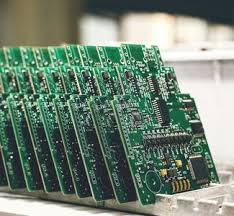Protope PCBs help in minimizing design risks
When developing electronic devices, prototype PCB is an essential part of the development stage, allowing you to mitigate design risks before making the next iteration of your electronics device to get ready for production. By prototyping, design teams have learned to unmask problems early in the development phase before the deployed system is launched, ensuring that before the product is released it meets both functional and regulatory requirements. This proactivity can prevent a huge amount of cost and time, making the end product better. Prototype PCBs – How do they reduce Design risks?
Design defects found early
Functional Tests- Prototyping allows engineers to test a PCB functionality within a controlled environment. This kind of hands-on testing can detect trace routing mistakes, under-spaced elements, otherwise undetectable shorts, etc since the anachronism in software will not show these bugs. Companies can catch these problems early, preventing expensive retooling and delays during production.
Performance in Thermal and Electrical testing : With proof of concept PCBs we can prove the design has been taken into reality and test the thermal and electrical performances in real world conditions. For example, a prototype can be made to check the power component heat dissipation, or EMC can be verified. Addressing these in the design phase goes a long way towards ensuring compliance with industry standards and minimises the risk of non-compliance penalties or even product recalls.
Improve Product Reliability & Longevity
Field Testing: Stress Testing of Prototype PCBs(course) - Field Testing of prototype PCBs measures their performance in the extreme conditions. This can comprise those such as thermal cycling (heating and cooling of the PCB), or vibration (mimicking real-world conditions experienced during transport and use). These test can highlight the fragility and ruggedness of the PCB material itself, contributing to the reliability and lifetime of the product.

Iterative Improvements
Quick Iterations: Such iteration speed is possible only through the use of prototyping of the PCB design. Engineers can iterate on the design and test performance, to bring better performing and lower cost parts to market in days rather than weeks or months. This iterative process is important to achieve the best possible design prior to the commitment to large scale production.
Integration of Feedback: Prototyping enables beta testers or would-be customers to provide feedback. The collected feedback will be very useful for tweaking the usability aspect of the product, such as the component configuration and the position of UI elements.
Cost-Effectiveness
Cost-Effective Development- While prototyping does come with some upfront costs, it is much less expensive than making changes once production has entered. Problems discovered at the prototyping stage can be fixed for a fraction of the cost once the project reaches post-production.
Avoiding Making the Wrong Thing - Companies can use the prototype to validate the design and make sure that they do not mass-produce something that does not work or is suboptimal. This early validation can really save on production budgets and schedules.
How moving faster forces you to be production ready
Manufacturing Process Validation: The prototype PCB is used to demonstrate the design and manufacturing process. This allows manufacturers to adjust their processes accordingly by finding potential issues with fabrication techniques, assembly procedures or material choices.
Supplier and Component Verification The same prototypes also function to verify the availability and quality of components from various suppliers. This is important to keep production timeline running and makes sure produced have meets the specification and available.
Summary, Prototype PCB boards are necessary for elecronics manufacturing. These contributions in design risk reduction, product quality improvement and meeting technical and regulatory standards are critical. When performing a comprehensive testing, combined with continuous and iterative improvements as early as the design phase, companies can shorten their production processes, reduce costs and provide a more reliable and proficient product delivery to the market.